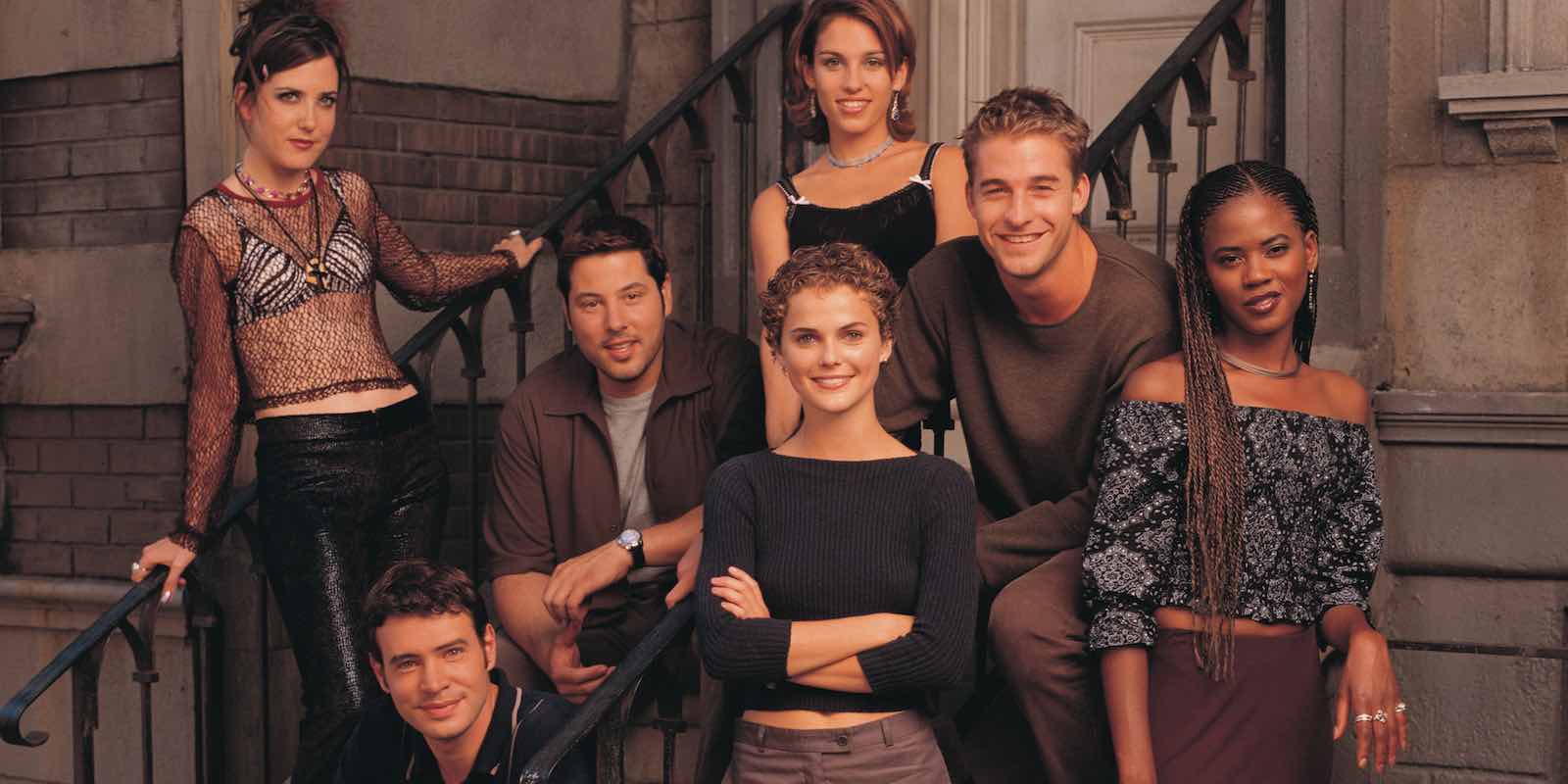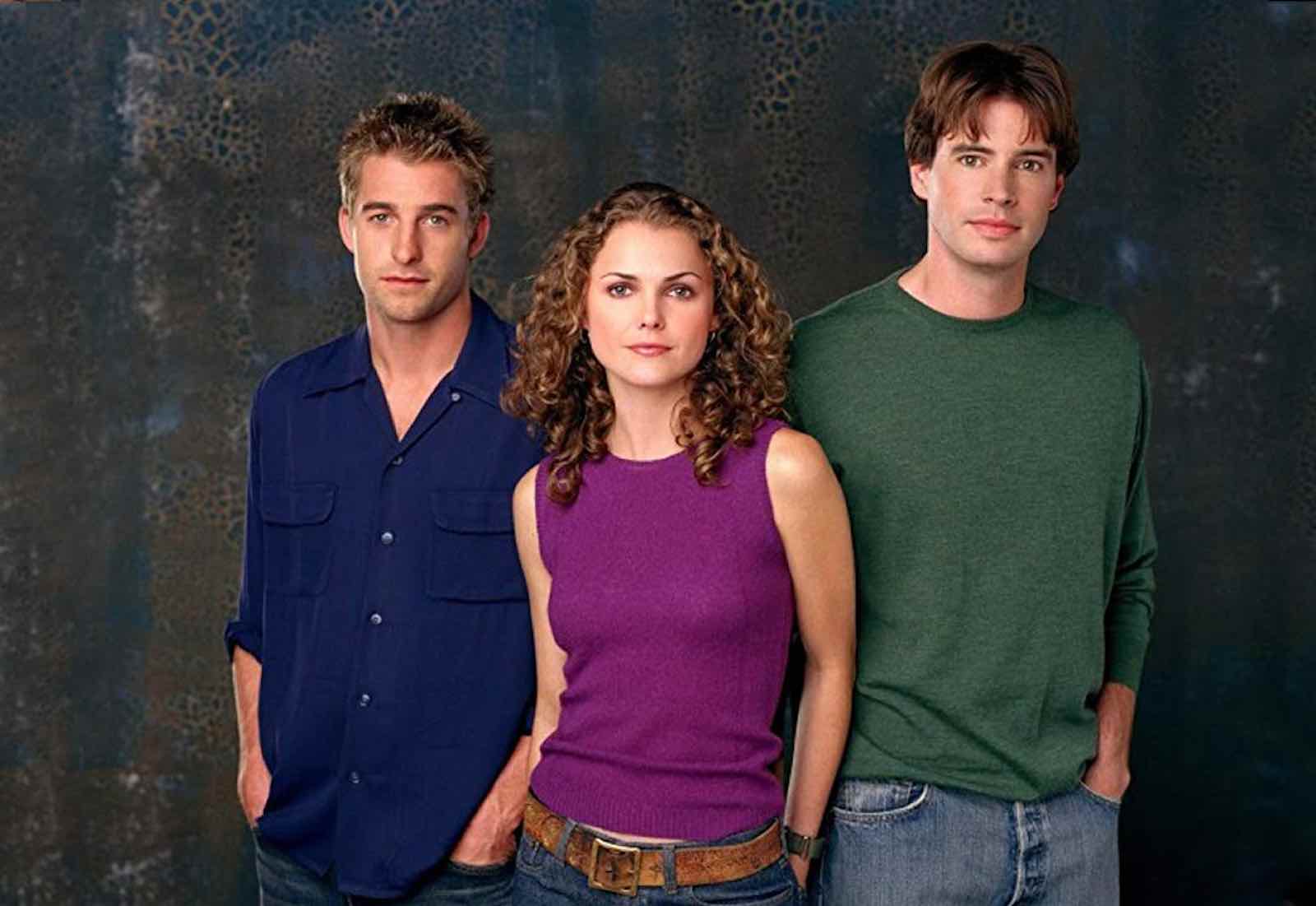
‘Felicity’ turns 20: Why the J.J. Abrams show was ahead of its time
Get ready to follow your crush across the country (and by crush, we obviously mean Scott Speedman) because the ATX Festival will be hosting a Felicity reunion, making all of your adolescent dreams come true.
Joining ya boy Speedman for the reunion at the Austin-based festival will be cast members Keri Russell (Waitress), Tangi Miller (Madea’s Family Reunion), Amanda Foreman (Star Trek), Amy Jo Johnson (Islander), and Ian Gomez (Norm) along with director-producer Lawrence Trilling (Dinner and Driving). Unfortunately there’s no official word on whether series co-creator J.J. Abrams (Lost) or beloved cast members Scott Foley (Scandal) & Greg Grunberg (Hollow Man) will join them, but we live in hope.

ATX is set to run between June 7 and 10 where you can catch the reunion of the late 90s / early 00s coming-of-age college show and bask in the nostalgia of just how great it was. Felicity lasted four seasons and had moments of true genius mixed with baffling incredulity.
However, what the show did achieve during those four years was some genuinely trailblazing teenage television – with Abrams in the background, Felicity was quirky & daring.
As well as exploring challenging issues with a fresh and compassionate eye, the show was groundbreaking for its experiments and risk-taking approach to episodic content. Still not quite convinced? Here are five reasons Felicity was ahead of its time.
It was unafraid to tackle LGBTQI issues
Just a year before teen-drama Dawson’s Creek introduced its first openly gay character (Kerr Smith’s Jack McPhee), Felicity introduced Javier (Gomez) – an openly gay Spanish immigrant who became a main character.
Though Javier could be accused of occasionally being one-dimensional and awkwardly stereotypical, Felicity still utilizes the character to explore the complicated intersections between sexuality, race, and class (in one storyline, Felicity even agrees to marry Javier so he won’t be deported).
Overall, Felicity has a progressive attitude towards LGBTQI issues, which was no easy feat for a show on The WB in the late 90s. It even addressed one character’s own bigotry towards his gay brother with a careful amount of sensitivity (dammit Noel!). Of course, modern TV is far more open to depictions of LGBTQI identity and explorations of the issues surrounding it, but in the late 90s? Not so much.
It featured one of the smartest rawest rape plotlines on TV
Since Felicity first aired, there have been numerous shows exploring sexual assault and issues surrounding consent with humanity and depth, like Jessica Jones, Veronica Mars, and even 13 Reasons Why. In 1998 – proving to be well ahead of the curve on such issues – Felicity delved into the topic with one of the most outstanding explorations of rape, consent, and the aftermath of sexual assault ever committed to screen.
Showing a consensual hookup between Julie (Johnson) and her new boyfriend Zach (Devon Gummersall, who will always be Brian Krakow from My So-Called Life.) When the hookup stops being consensual mid-way through the act, Felicity explored the dispute regarding the “blurred lines” of consent.

The episode never strays into after-school-special territory, nor does it simplify the issue – the plotline makes for a difficult watch because Zach isn’t painted as a one-dimensional college rapist and Julie isn’t reduced to a helpless victim. Instead, the episode explores Zach slowly coming to terms with the fact he crossed a line.
Likewise, we see Julie and the rest of her community dealing with issues of guilt, distrust, and disbelief as they face up to the idea of enthusiastic consent, sexual boundaries, and nice guys being capable of doing bad things.
The storyline shows characters figuring out who was really to blame for what had happened and how they could prevent it from happening to themselves or anyone else on campus again. With the current conversations focusing on MeToo, Time’s Up, and college campus sexual assaults, the episode seems even more relevant today as one of TV’s most visceral and intelligent explorations of rape as a community issue.
It wasn’t afraid to take massive genre risks
These days fans are used to genre mashups in shows like Riverdale (which can hop between neo-noir, wholesome American teen show, and slasher horror within a matter of minutes) or Supernatural (which recently aired its Scooby-Doo crossover episode), but it was a little more unheard of in the 90s.
Dawson’s Creek dabbled in episodes exploring takes on the slasher-horror genre, but the show still ostensibly retained its sense of identity and overall canon. However, in the Felicity episode “Help For The Lovelorn”, the show broke down the rules to explore a black & white tribute to The Twilight Zone.

Felicity, Elena, Ben, and Noel fit seamlessly into the narrative as it explored the titular character visiting a strange clinic to find a solution for her broken heart (only to discover it means living without one). The episode was helmed by former Twilight Zone director Lamont Johnson and written by Abrams, which might help to account for its genius.
Despite its unconventional approach to exploring a seemingly never-ending plot point (when was Felicity not brooding over some from of heartbreak?), the episode didn’t exactly feel strange within the Felicity canon. It also signaled a sign of things to come for the rest of Abrams’s diverse and audacious career.
It featured a sneaky forerunner to Cloverfield
The episode “Docuventary” – in which Sean (Grunberg) uses a handycam to make a documentary about the lives of his friends – could be considered a precursor to Abrams’s found-footage horror, Cloverfield. Providing intimate glimpses at the characters and their lives, concerns, and many quirks, the episode delivers a lo-fi shaky narrative composed almost entirely from the footage Sean takes of his buddies.
As Felicity, Ben, or Julie walk through the streets of New York talking about whatever banal issue is bothering them that day (or simply requesting the camera gets put away), the footage is so reminiscent of the opening scenes of Cloverfield it wouldn’t be out of place to see a monster manifesting from the skyline behind.
The show wasn’t afraid to piss off fans
Okay, so the notorious first episode of the second season didn’t so much break new ground for television as it did introduce a strange cultural phenomenon of fans taking way too much ownership of TV plotlines & characters.
Showing Felicity cutting her iconic curls off and leaving her with an adorable pixie cut, the episode caused mass outrage across the U.S., so much so that it’s been continuously parodied in TV shows including 30 Rock, Happy Endings, Family Guy, and Buffy the Vampire Slayer.
At the time, WB Entertainment President Susanne Daniels was forced to respond to the mass upset and jokingly introduced a new rule: “Nobody is cutting their hair again on our network and our staff. That’s my new stance. No more haircuts!”

Hello Giggles writer Lesley Bruce summed up the feelings that swept through the country that year. “Like many diehard fans of the show, my heart shattered the day magazines and newspapers featured Russell’s new tightly wound pixie cut . . . I was blindsided and felt betrayed by this revelation — never was I even consulted in such a momentous decision.”
We loved Felicity, we loved Russell as Felicity, and we loved her curls. To cut them off was apparently the biggest affront possible to fans who presumably felt betrayed by their newly-shorn TV bestie.
Producers reportedly thought the cut would be a fun move for the character after Russell shared a picture of herself wearing a cropped wig. What they didn’t anticipate was fans would revolt against the act and the viewership would staggeringly drop as a result. Ah, the start of the new Millennia – they were quieter times.







